15 Places in Utah that Prove the State is Weirder Than You Think
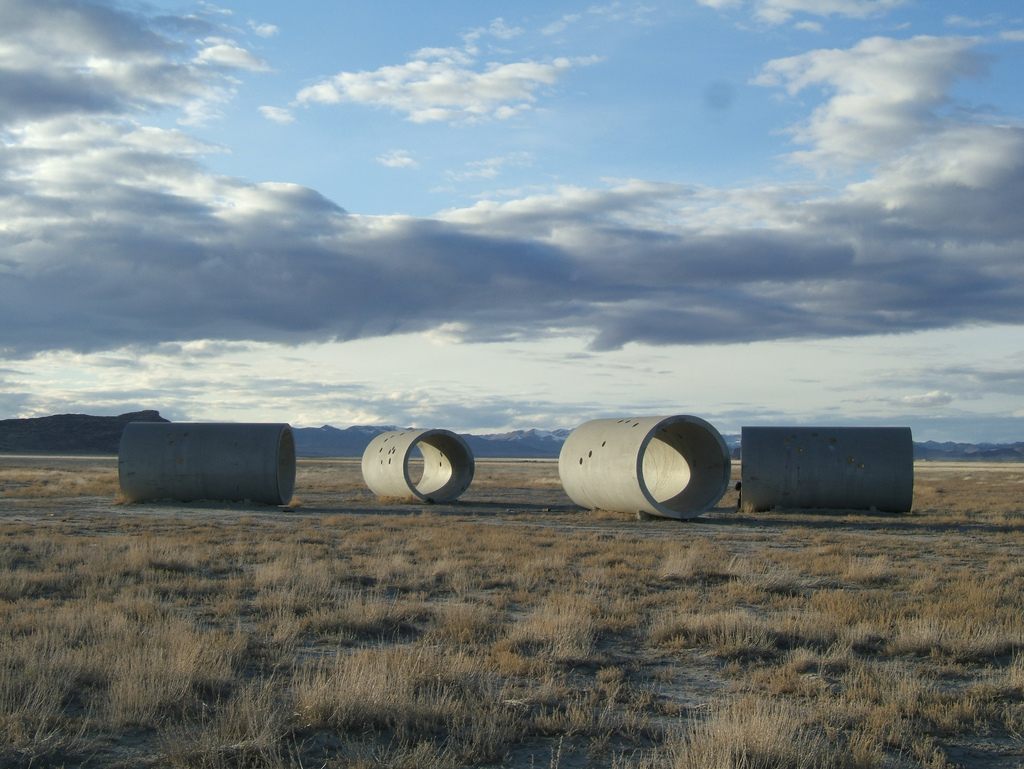
Concrete astronomy art tubes? Utah’s got ‘em. (Photo: Calvin Chu/Flickr)
Whenever people think of Utah, they either think about Mormons, skiing, or the Sundance Film Festival (and the people living in Utah can’t wait to stop being asked about the same). But the Beehive State is chock full of amazing secrets and locations that prove it to be much stranger and more idiosyncratic than most people know.
The state is filled with unique natural wonders ranging from a rock formation that looks like a giant slide to a forest made of just one extraordinary tree. Utah also has its fair share of man-made marvels. From a rocky spiral that can only be seen during drought season to a downtown pyramid that offers mummification, Utahns have created a place full of odd and eccentric features.
Here are 15 locations that make a compelling case that Utah is one of the most wondrous states in America.
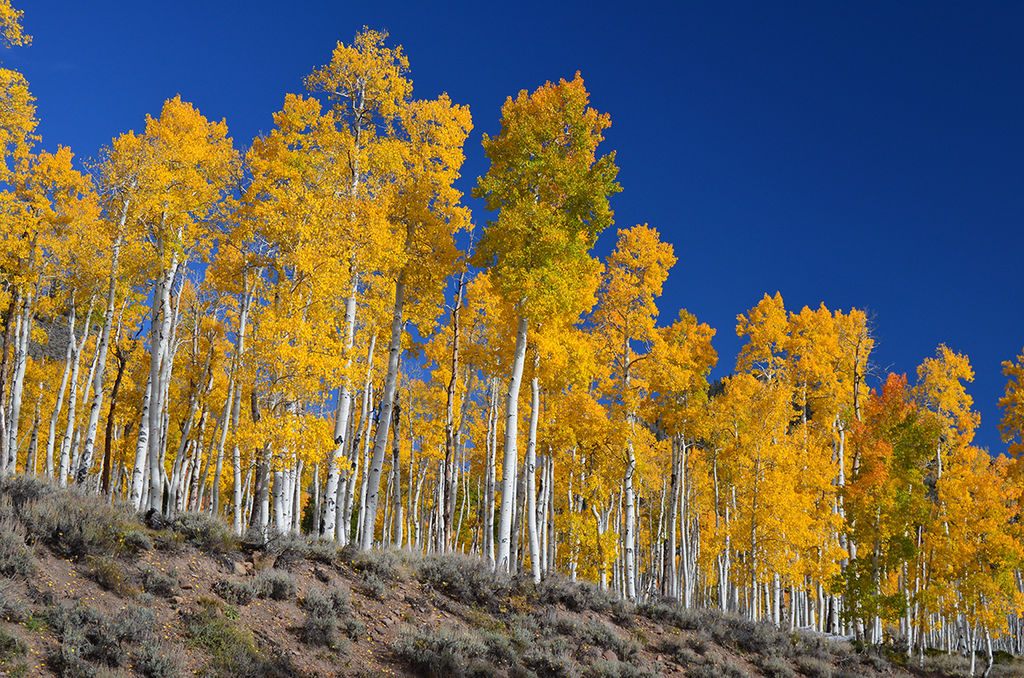
That is really just one tree. (Photo: J. Zapell/Wikipedia)
Do you see that forest of gently swaying aspens there on that ridge? Well, while they look like a lovely grove, they are in fact a single monstrous organism, known as Pando, the Trembling Giant. These trees are what is known as a “clonal colony,” where clones of a single tree replicate themselves into a forest. Pando is connected by a single enormous root system, that just happens to sway beautifully in the breeze.

The name sort of says it all. (Photo: Poet Architecture/Flickr)
Extending out into the Great Salt Lake like some sort of whimsical natural formation, the Spiral Jetty has been delighting photographers and visitors since 1970. The giant waterside design was built by artist Robert Smithson, but his art disappeared almost immediately. The swirling line of rocks was constructed during a drought, so when the water level once again rose, the work was lost beneath the waves for decades. Now the Spiral Jetty only shows its face irregularly, when the water level drops sufficiently.

Mars right here in Utah. (Photo: McKay Salisbury/Wikipedia)
Mars is located less than 10 miles outside the small Utah town of Hanksville. Well, sort of. The Mars Desert Research Station was built among the rocky red stones of the surrounding desert. Here, researchers pretend they are isolated on the Red Planet, and study what habitat construction and design might look like on the far away planet, and how to search for organisms if we ever get there. The participants even don spacesuits when they go outside.
FIRST LADY DOLLS AT THE UINTAH COUNTY LIBRARY

Custom First Ladies, anyone? (Photo: danielrthorne/Atlas Obscura)
This odd collection tucked away in a small Utah library contains homemade doll versions of almost every First Lady right up to Nancy Reagan. Utah sculptor Phyllis Park carved the likenesses of each leading lady in the collection, by attaching custom heads to bodies filled with sawdust, and dressing them in doll-sized replicas of outfits the women really wore. Unfortunately, the doll-maker retired before the collection could be completed.

Welcome to fantasy land. (Photo: James St. John/ Flickr)
The Utah desert is full of otherworldly vistas that seem like something straight off the cover of a pulp science fiction novel, but few more so than the aptly named Fantasy Canyon. This range of lumpy, undulating stones is the result of thousands of years of erosion combined with the disappearance of ancient rivers that once flowed through the area. Today, the bulging rocks continue to draw visitors looking to see the surface of another planet right in their own backyard.

Yes. They offer mummification. (Photo: Wikipedia)
Who says all the best pyramids are in Egypt? The Summum Pyramid in Salt Lake City might not be as ancient as the well-known stone relics of Egypt, but it is a fair bit stranger. The modern pyramid was built by “Corky” Nowell after he was contacted by an alien consciousness which led him to start a new religion incorporating Gnosticism and ancient Egyptian polytheism. This new belief system led to the creation of the orange Summum Pyramid, which acts as the religion’s temple. To earn money, the church offers mummification services to go along with its pyramid.
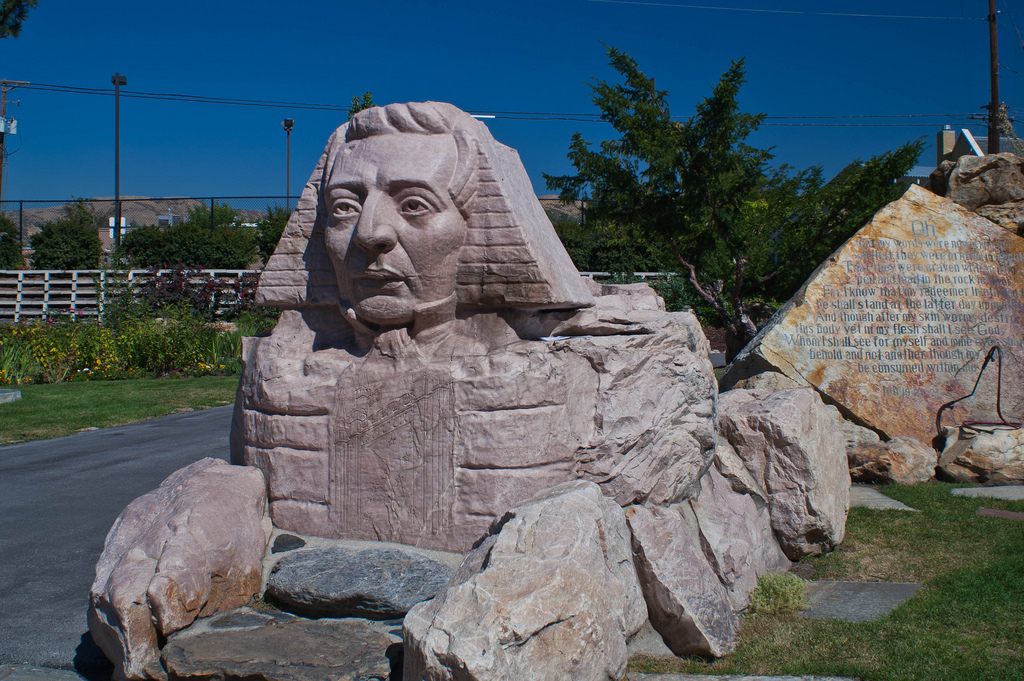
What riddles does the Joseph Smith Sphinx hold? (Photo: utahwildflowers/Flickr)
Gilgal Sculpture Garden mixes one man’s bizarre vision and religion. Among the stone oddities on display–all carved throughout the 20th century by Mormon bishop Thomas Battersby Child, Jr.– are a sphinx figure with the face of the famous Mormon leader Joseph Smith, and “Mr. Brick Pants,” a statue of the builder himself, with legs made of brick. Battersby passed away in 1963, but his garden is now a state park, and visitors are welcome to come and see his strange creations.

Enjoy this house before it floats away. (Photo: Brett Neilson/Flickr)
This small home in a Utah suburb was created in the image of the floating house from the Pixar film, Up. The brightly colored home (which is not affiliated with Disney in any way) was designed after the specifications seen in the film, both inside and outside. After completion, the house actually went on the market, and apparently got snapped up by some super-fans. The director even sent them a signed poster.

This is what happens when you can’t drink. (Photo: L Steven Gerner/Wikipedia)
Despite being the seat of Mormon power, Utah is also home to one of the largest Holi color festivals in the world, at the Sri Sri Radha Krishna Temple. This ornate Hindu temple in Spanish Fork welcomes tens of thousands of people each year for the festival. When it is in full swing, revelers send handfuls of colored dust up into the air in unison; when it comes back down, the entire crowd ends up bathed in neon hues.
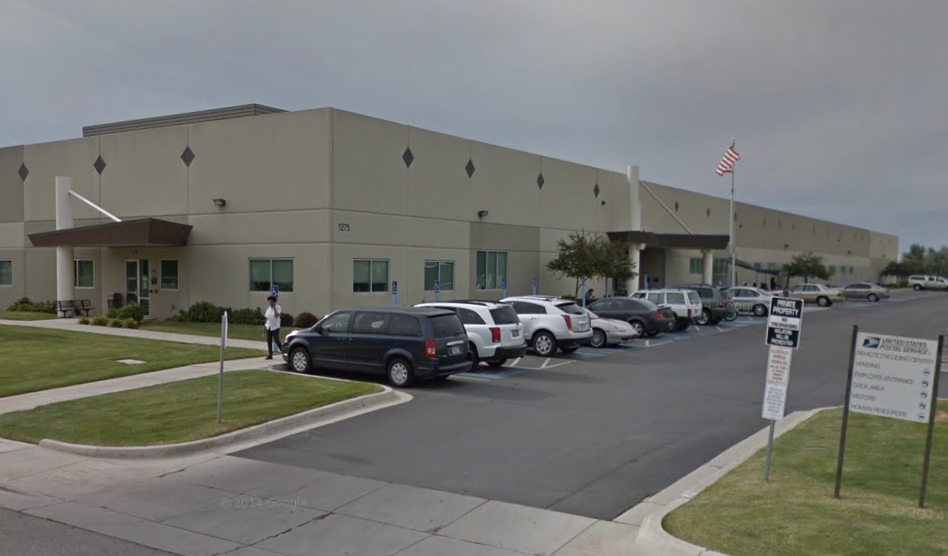
It may not look like much, but this is bad handwriting purgatory. (Photo: Google Earth)
All of the unreadable addresses in the U.S. Postal System eventually find their way to this single processing facility on the outskirts of Salt Lake City. All day, humans at the center decipher the addresses that the USPS’ automated systems can’t. Once upon a time, there were a number of such facilities around the country, but now all “dead letters” flow through this center. Be careful when addressing your letters, or they might be taking an unscheduled trip to Utah.
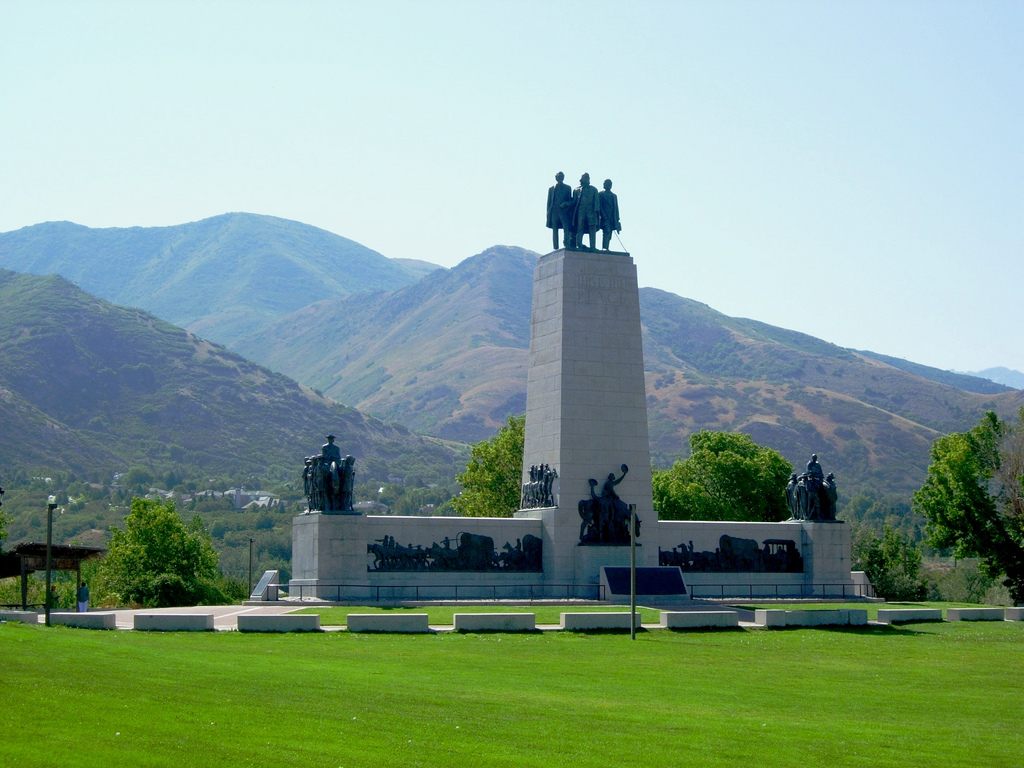
This must be the place. (Photo: Hugh Milward/Flickr)
This stone and bronze monument overlooking the Salt Lake Valley is a well-known piece of local history. The tall plinth marks the spot where Brigham Young supposedly stood when he decided that his Mormon followers should settle in Utah, in 1847. The spectacular view of the valley is worth a look in and of itself.
TINTIC STANDARD REDUCTION MILL

This isn’t an old super-villain’s lair, it just looks like one. (Photo: DT Brimhall/Flickr)
Perched on an otherwise empty slope outside of the small town of Goshen, the remains of the Tintic Standard Reduction Mill look like the ruins of a science fiction fortress. The round orange water tanks are now covered in graffiti and ravaged by time. Even though the structure is slowly crumbling beneath the sun, the site is now a protected historic landmark, so graffiti or no, it will likely survive for a while longer.
THE DEVIL’S SLIDE

Nature made this slide, not Satan. (Photo: Jeremybrooks/Wikipedia)
The impressive natural formation known as the Devil’s Slide certainly looks like it was created with a guiding hand. However, this uniform stone corridor was formed by a pair of naturally occurring limestone walls that run down a hillside in Utah’s Weber Canyon. The slim shaft looks like a great place to go sledding, but given that the formation is slowly eroding, it’s not advised.
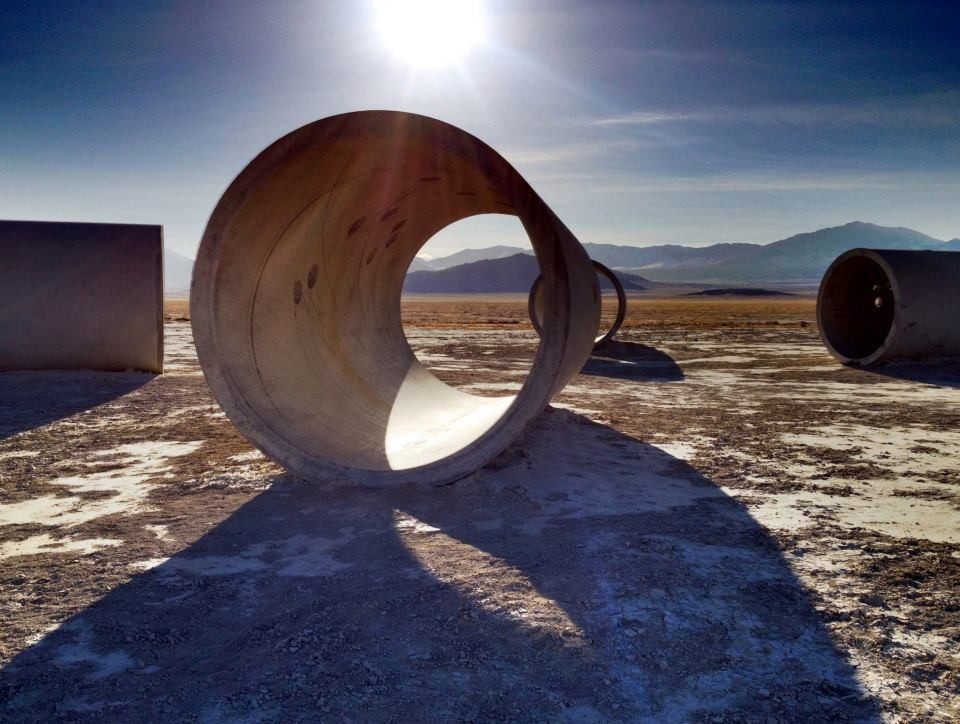
Hop in one of these and be blinded by an equinox. (Photo: zachofalltrades/Atlas Obscura)
This quartet of concrete tubes look like not unlike discarded construction materials, but they are actually an artwork meant to act as a sort of astrological calendar. Built in 1976, the tubes were put in place by artist Nancy Holt, who positioned the four cylinders in a cross formation to harness the light of the sun. During the summer solstice, sunlight shines straight through two of them, while during the winter solstice, the sun shines through the other two. In addition, there are smaller holes bored into the cylinders that correspond to certain constellations.
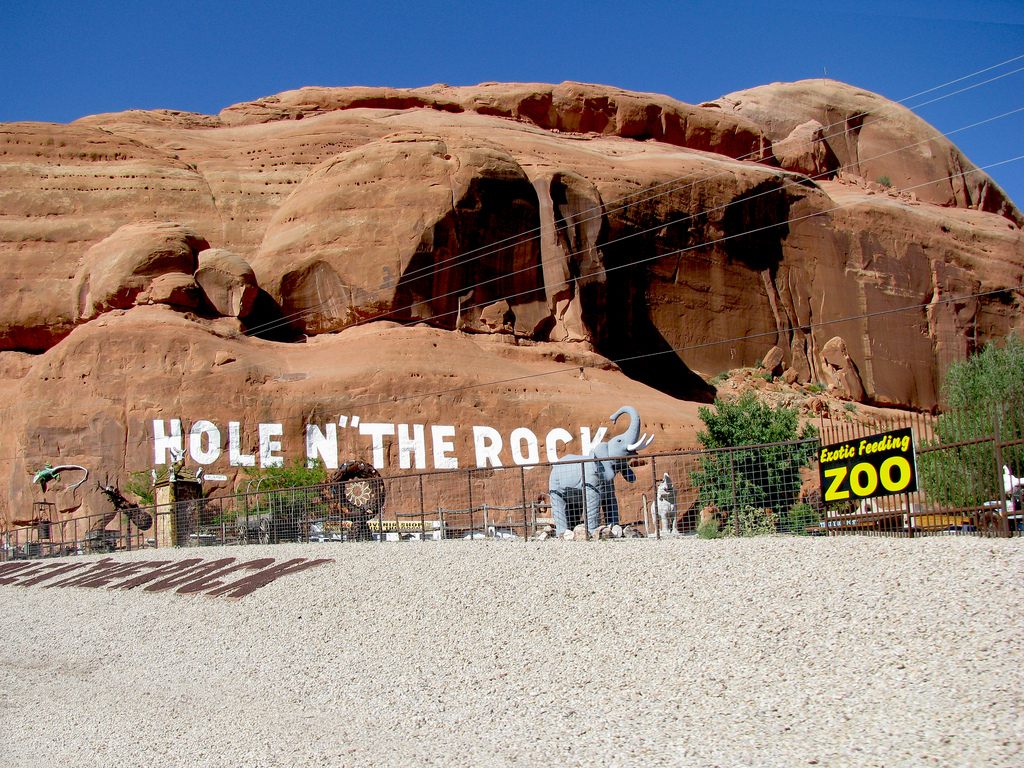
In case you might have missed it along the road, just look for the elephant and the giant letters. (Photo: jphilpg/Flickr)
This roadside attraction and diner was once a home that was blasted out of the rock by a single man. Starting in the 1940s, Albert Christensen began digging, scraping, and blasting his new home out of a massive red rock formation in Southern Utah. He spent 12 years on the odd home before he died. His wife continued to live there for some time too, before it became the quirky rest stop it is today.











Follow us on Twitter to get the latest on the world's hidden wonders.
Like us on Facebook to get the latest on the world's hidden wonders.
Follow us on Twitter Like us on Facebook